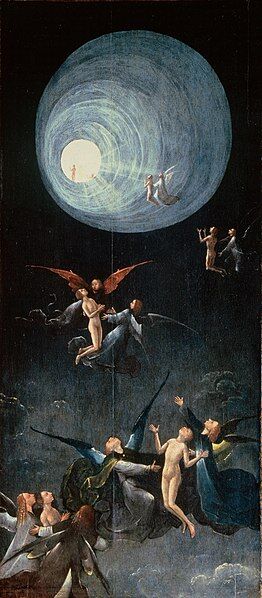Synchronicity
Charlottesville Psychiatrists Challenge Official Reality
Reincarnation, meaningful coincidences, and NDEs require a new paradigm.
Posted November 16, 2022 Reviewed by Vanessa Lancaster
Key points
- Research on near-death experiences, reincarnation, and meaningful coincidences challenge the reigning scientific paradigm.
- Synchronicity and serendipity highlight our deep interconnection with each other, and other beings, suggesting we are part of our surroundings.
- National funding agencies should consider investigating the claims of NDEs, reincarnation, and synchronicity researchers.
Charlottesville, Virginia, was once again the site of a terrible tragedy this week when three football players were killed on campus. But Charlottesville contains many opposites. It is also the home of the Division of Perceptual Studies (DOPS) at the University of Virginia, the only academic parapsychological unit in the United States. Three psychiatrists, Bruce Greyson, Jim Tucker, and I, each associated with DOPS, are challenging conventional views of reality through our research. Science needs new paradigms about how reality works to be able to effectively address the many challenges to human, animal, and plant survival.
We are in the midst of the 6th major extinction of life on our planet. Human activity is the primary culprit. DOPS is a leader in the challenge to find new paradigms.
Psychiatrists are trained to distinguish between psychosis and reality. We are doing just that with the systematic study of human experiences that materialistic science has trouble explaining. Well-meaning, hardline skeptics prefer instead to find problems in study design or invoke randomness, as psychiatrist Ralph Lewis (2020) wrote in Psychology Today.
As John Mack (2021), a former professor of psychiatry at Harvard, has clearly described, human beings have great difficulty replacing their fundamental views of how things work. Scientism, which sees the universe as a logically knowable, predictable, controllable, and undirected process, has become a belief system, much like a religion, rather than continuing the basic intention of science—to systematically ask questions about how anomalies can be understood and used.

Challenges to Scientism
Near-death experiences (NDEs) are intensely vivid and often life-transforming experiences, many of which occur under extreme physiological conditions such as trauma, ceasing of brain activity, deep general anesthesia, or cardiac arrest in which no awareness or sensory experiences of any kind should be possible according to the prevailing views in neuroscience. (See Dr. Greyson’s book After (2021) for his well-researched information about these experiences.)
Some young children, usually between the ages of 2 and 5, speak about memories of a previous life they claim to have lived. At the same time, they often show behaviors, such as phobias or preferences, that are unusual within the context of their particular family and cannot be explained by any current life events. These memories appear to be concordant with the child’s statements about a previous life. (See Dr. Tucker’s book Before (2021))
Synchronicity and serendipity are forms of meaningful coincidences. Their most common presentation involves a mental image or thought that matches an objectively observable event in the surroundings. The sheer number of these meaningful coincidences suggests that our minds are not as separate from our environments as suggested by scientific materialism (Beitman, 2022).
New Paradigms Needed
Scientism is not wrong. It is limited. The curiosity and openness to anomalies and their relevant data have always been part of the scientific approach to reality and need to be part of the new evolving science. The findings of NDEs, reincarnation, and synchronicity research require us to re-conceptualize human identity. NDEs suggest that people can be conscious when their brains are not functioning. What, then, is consciousness separate from the brain? Children who remember past lives are hinting at the possibility that some aspect of oneself survives bodily death. Meaningful coincidences suggest that we are imbued with untapped abilities while also being guided by currently mysterious forces.
The data are strong. The questions are many. Can the National Institute of Health and its counterparts in other countries consider developing requests for proposals to more fully evaluate the claims current data are making?
References
(Mack, J.E. Studying intrusions from the subtle realm: how can we deepen our knowledge? In Steinfeld, A. (ed) Making Contact. New York: St. Martin’s Essentials)
Greyson B. (2021) After: A Doctor Explores What Near-Death Experiences Reveal About Life and Beyond New York: St. Martin’s Essentials)
Tucker, J (2021) Before: Children's Memories of Previous Lives. New York: St. Martin’s Essentials
Beitman, B. D. (2022). Meaningful Coincidences: How and Why Synchronicity and Serendipity Happen. Rochester, VT: Inner Traditions


